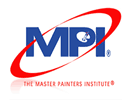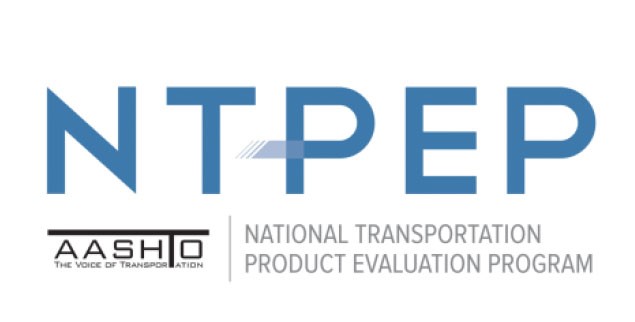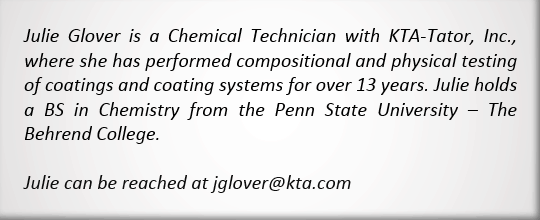Introduction
Coatings are used to protect a variety of substrates in a variety of service environments that range from atmospheric to gaseous, immersion/splash, high/low temperature, high pressure, interior/exterior, etc. Selecting a coating or coating system that has proven performance in a given service environment can be a daunting task. Leaving the coating system selection process to the painting contractor can result in non-equivalent bids, and the potential for installation of a coating system that is not designed to withstand the environment. The development of an Approved Products List (APL), also known as a Qualified Products List (QPL) that can be included in a specification eliminates a lot of potential issues and allows the contractor to select the coating system (based on preference, availability, quality of technical support, or cost) from a list that is “pre-approved,” which makes things better and simpler for all stakeholders. This article describes how a facility owner can establish an APL/QPL that can be referenced in a project specification.
Organizational APLs/QPLs
One global organization, The Master Painter’s Institute (MPI), has consolidated approved paints that are categorized by the paint manufacturer, the end uses, and generic coating type. MPI maintains a website of their recommended and approved products; an APL.
 As is the case with most APLs, MPI’s products are tested according to their specific test criteria (specifications), numbered from 1 – 300. The specifications include a combination of ASTM standard test methods and MPI methods. Once the products are approved, MPI adds them to the list for public access.
As is the case with most APLs, MPI’s products are tested according to their specific test criteria (specifications), numbered from 1 – 300. The specifications include a combination of ASTM standard test methods and MPI methods. Once the products are approved, MPI adds them to the list for public access.
The process for MPI approval is rigorous. The paint manufacturer completes an application for each product to be tested and submits the application into a specific category. The coating product is then tested by category, which is selected based on the expected end use. However, the expected end use of the product may not be as originally intended once the testing has been completed. Some products that were submitted initially, for example, for inclusion in the exterior high gloss category, may not fit those exact test criteria as defined by that category, but meet the requirement of another category, i.e. exterior low gloss, and the testing will be transferred to that category if agreed to by the paint manufacturer. In some cases, a single product submitted by a manufacturer can be submitted, tested and accepted into multiple test categories. Once the product is listed on the MPI APL, the product is tested annually, either to the full list of tests or to a shortened list. If the manufacturer neglects to submit their products annually for testing, those products can be delisted (removed from the APL). In this case, the manufacturer must start the process over by completing a new application to get the delisted product onto the APL again, which includes the initial full testing protocol.
A complete listing of products is available on MPI’s website at www.paintinfo.com by selecting the link to “Approved Products List.” The MPI APL link is paintinfo.com/mpi/approved/Partner_index.shtml. There are three different ways to search the MPI website and locate an MPI product on the APL. The first option is to search by product type by referencing the MPI standard. The second option is searching the alphabetical list of the approved products; the third option is to search by product type, i.e. exterior products by primer, sealer, intermediate or topcoat. Searches can also be conducted based on solvents, interior or exterior use, or by substrate to be protected, etc. If the user knows what type of system is needed, the search can be simple. However, if the user is unfamiliar with the options available, searching the alphabetical listing by coating type is likely a better route. Each coating type category is an active hyperlink that will lead the user to an up-to-date list of approved products. The APL includes the name of the coating manufacturer, label, product name, code, and recommended gloss category, along with availability of any environmentally friendly, green coatings. If the user knows which coating type or coating system to use on a specific job or application, the MPI APL can save a lot of time.
Another organization that provides a list of qualified coating products is the Department of Defense (DoD). The DoD QPL website is www.qpldocs.dla.mil. It is a publicly accessible, searchable website of all approved products for a variety of applications. With the MPI website, the user can search by manufacturer or by product type; however, the DoD QPL website search is limited to: the use of the coating product; the different environments and services, i.e. pipeline, wastewater, pools, transportation, ships, railcars, etc.; and knowing the DoD’s assigned documentation number, specification number, etc. This site is accessible to any paint manufacturer attempting to get their products onto the QPL. The DoD QPL process of submitting, testing and getting listed can be rigorous with required inspections and specific testing.
Company-Specific APLs
Individual companies/agencies can create APLs for their specific locations, since they know the service environment and the types of coatings that will protect adequately. These lists are frequently very specific and may only have a few options. For example, a natural gas transmission company may develop mini (5 or 6-page) paint specifications that contain a description of where the system would be used (e.g., exterior carbon steel, non-immersion); surface preparation (e.g., SSPC-SP 10, 2-4 mil surface profile), generic coating types (e.g., epoxy zinc/epoxy/polyurethane); ambient conditions; coating mixing and application instructions; and thickness per coat. The coating materials section would include a list of 3 to 5 coating systems (by brand name) that are already approved for use. The contractor selects a system from that list (all coats from the same manufacturer, no mixing/matching across manufacturers), effectively eliminating the chance of using a coating system that is not designed to work in the designated environment.
Performance Testing Databases
 There are markets that create lists of coating systems that have been submitted and tested according to a standard protocol. There is no pass-fail criterion, but the data can be “mined” and used by companies/agencies to apply a pass-fail criterion, compare the performance of multiple systems against the criteria and create an APL/QPL. The American Association of State Highway and Transportation Officials (AASHTO) has such a program: The National Transportation Product Evaluation Program (NTPEP), which is frequently used by State agencies and toll agencies to create APLs. AASHTO is a non-profit, nonpartisan association representing highway and transportation departments in all 50 states, the District of Columbia, and Puerto Rico. The NTPEP has several Work Plans based on AASHTO specifications, including one for structural steel coatings (SSC). The testing requirements listed in the SSC Work Plan are not representative of the environments in all 50 states, but the test results posted to the site are quite useful for selection of coating systems with desired corrosion prevention characteristics. The testing is paid for by the coating manufacturer and performed and uploaded to a central database by an independent lab contracted through AASHTO. The system remains in DataMine (the test results database) for up to 7 years unless there is a product formulation change, which requires resubmittal and retesting. The convenience and economic advantage of paying to test once and have the data be available to literally dozens of transportation agencies significantly reduces redundant testing and the overall costs of creating a legitimate APL/QPL.
There are markets that create lists of coating systems that have been submitted and tested according to a standard protocol. There is no pass-fail criterion, but the data can be “mined” and used by companies/agencies to apply a pass-fail criterion, compare the performance of multiple systems against the criteria and create an APL/QPL. The American Association of State Highway and Transportation Officials (AASHTO) has such a program: The National Transportation Product Evaluation Program (NTPEP), which is frequently used by State agencies and toll agencies to create APLs. AASHTO is a non-profit, nonpartisan association representing highway and transportation departments in all 50 states, the District of Columbia, and Puerto Rico. The NTPEP has several Work Plans based on AASHTO specifications, including one for structural steel coatings (SSC). The testing requirements listed in the SSC Work Plan are not representative of the environments in all 50 states, but the test results posted to the site are quite useful for selection of coating systems with desired corrosion prevention characteristics. The testing is paid for by the coating manufacturer and performed and uploaded to a central database by an independent lab contracted through AASHTO. The system remains in DataMine (the test results database) for up to 7 years unless there is a product formulation change, which requires resubmittal and retesting. The convenience and economic advantage of paying to test once and have the data be available to literally dozens of transportation agencies significantly reduces redundant testing and the overall costs of creating a legitimate APL/QPL.
Summary
Substantial time and money is saved during the selection process by having APLs/QPLs like those maintained by MPI and the DoD, as well as databases containing performance data like the AASHTO NTPEP DataMine so that owners can create their own APL/QPL based on reliable test data. These types of databases benefit coating manufacturers and facility owners alike; whether veterans of the coating industry or relative new comers. The challenge is to keep these lists populated with new-technology coatings and coating systems that are friendly to the environment, offer improved corrosion prevention, and longer-term performance.



